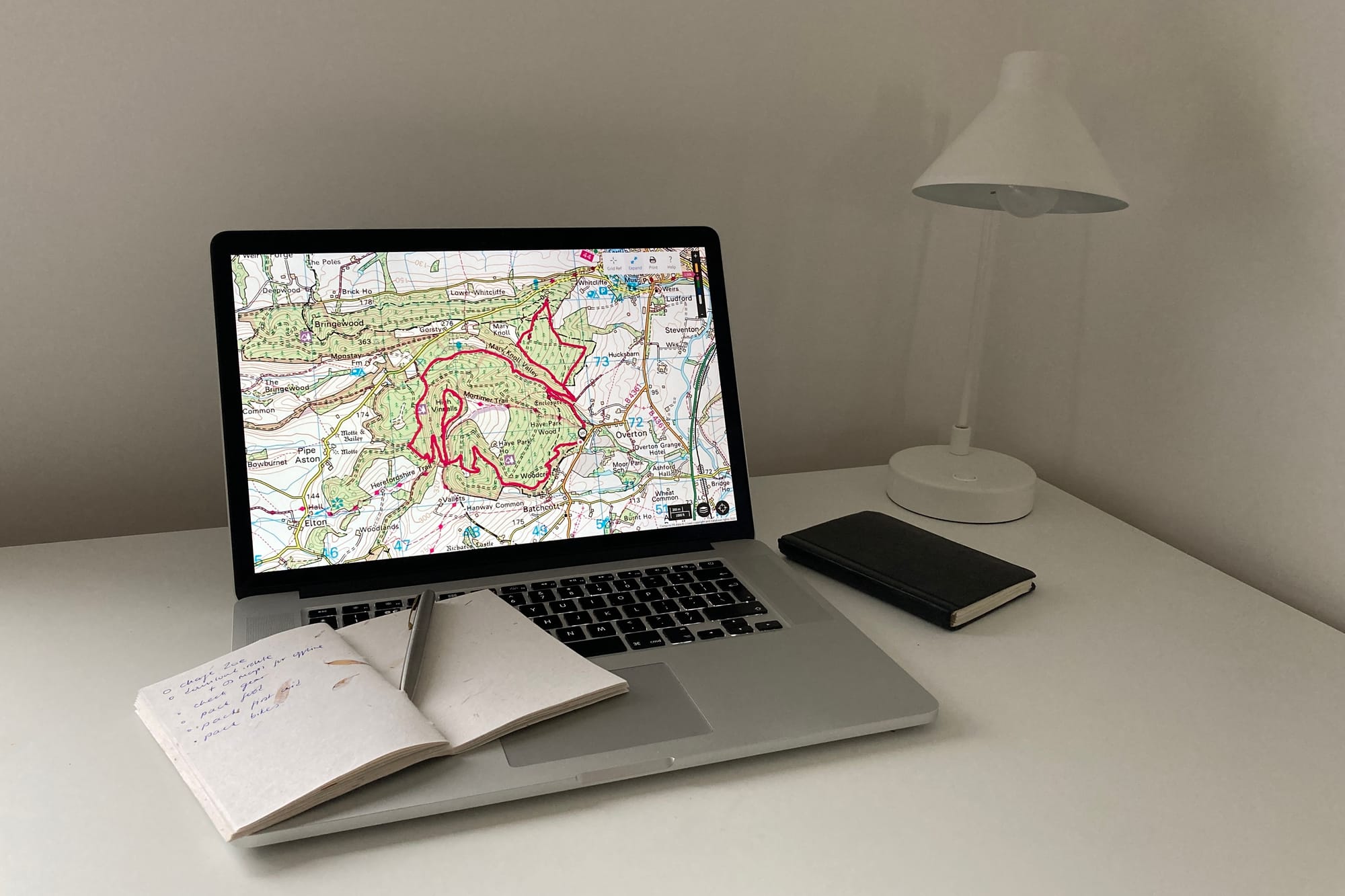To plan, or not to plan
Is it better to prepare meticulously for an adventure, or just set off and enjoy whatever unfolds?

Imagine just getting up one day and seeing where your bike or walking boots take you. It’s a beguiling, romantic and transgressive idea. It threatens the order of the regimented lives we construct for ourselves and which society constructs for us. What about work? What about putting the bins out? Our heads tell us we must do these things; our hearts tell us we should be cycling to India solo with just a change of clothes and a pistol. That, famously, is what travel writer Dervla Murphy did in 1963.
I could never follow Murphy’s example – and not just because gun laws and border controls have been tightened since the 60s. I’m a planner. I like to scrutinise every detail of a route, make packing lists and keep notes detailing all the logistics involved. I even enjoy pondering hypothetical trips. How would I cycle from my home to Scotland? What would be the best route through France? Which pilgrimage route would I most like to walk? Questions like these keep me occupied for hours as I lose track of time making cartographical connections.
Some trips need a lot of planning. In wilder country, like when G and I backpack camp on Dartmoor, planning ensures a safe trip. We have a route card and a poor weather alternative. We leave a copy of the plan with J, along with instructions to raise the alarm if we don’t report in by a certain time. Our packing list is meticulous, with emergency equipment, extra food and spare clothes. And we scrutinise the weather forecast endlessly in the days before we depart.
All that seems sensible on Dartmoor, but I live in a well-populated lowland area of the UK. Why don’t I just set out on a more spontaneous walk or bike ride and see where my legs take me? What’s the worst that could happen? Not much, of course. Take a phone, water bottle, sandwich and a debit card and I’d be prepared for most eventualities. Without a plan to follow, I’d be free to wander, to stop and absorb more of the world than I’d see staring at a route on a GPS.
Freedom features prominently in the literature of unplanned adventures. In his memoir As I Walked Out One Midsummer Morning, Laurie Lee recalled his feelings as his job on a building site in London came to an end. He would, he realised, ‘be penniless, free, and could just pack up and walk away’. Frankly, that much freedom sounds terrifying to me – I know I’d never enjoy finding myself wandering penniless and aimless.
But I do enjoy more spontaneous adventures, such as the day one January when I set off to walk north to south, and back, along the Malvern Hills. This was home ground for me, so I didn’t need to prepare. And into the headspace that’s usually reserved for routes, timings and logistics, rushed all kinds of thoughts.
Each footprint held a memory: dim recollections of walking, aged five, the length of the hills with my parents and our family friends; after-school hikes to the cafe on the Worcestershire Beacon (and later seeing, from my parents' house, the spectacular fire that burnt it down); sitting on the hills with mates during Covid. It was all here.
Reading the post I wrote about walking out that midwinter morning, it’s clear my propensity to plan too often stops me from getting beyond the front door. I think the lesson I really need to learn is that there’s a balance to find. Yes, it’s important to be prepared and avoid situations I really don’t want to be in (like having to sleep in a hedge). But it’s also useful to embrace the unexpected and let a little chaos into my life – to take that first unplanned step and see what follows.
Maybe I'll be rewarded with a time of silent contemplation, alone with my thoughts. Silence and solitude seem bound inextricably to walking. Norwegian explorer and philosopher Erling Kagge – the first man in history to reach the north and south poles plus the summit of Everest by foot – sees silence as a common thread in his adventures. In his view, ‘walking and silence belong together’.
And in the early chapters of The Offing, novelist Benjamin Myers has his main character and narrator, sixteen year old Robert Appleyard, explain why he wants to set off on foot from his home town in northern England. Robert says that ‘only when alone in the wild had I ever come remotely close to beginning to know my true self’.
Yet Robert finds his true self not through isolation, but through his encounter with the mysterious and eccentric Dulcie at her cottage in Robin Hood’s Bay. Dervla Murphy’s account of her bike ride to India, Full Tilt, is full of stories about the people she met along the way. Indeed, it wouldn’t have been published at all if it weren’t for her chance encounter in Delhi with Penelope Chetwode, John Betjeman’s wife.
Would freeing myself from the constraints of a plan make me more open to serendipitous encounters? Perhaps. But even if I don’t bump into my future publisher on a walk or bike ride, I think some spontaneity might help me live more for the moment.
So here’s to planning a just a little bit less.

